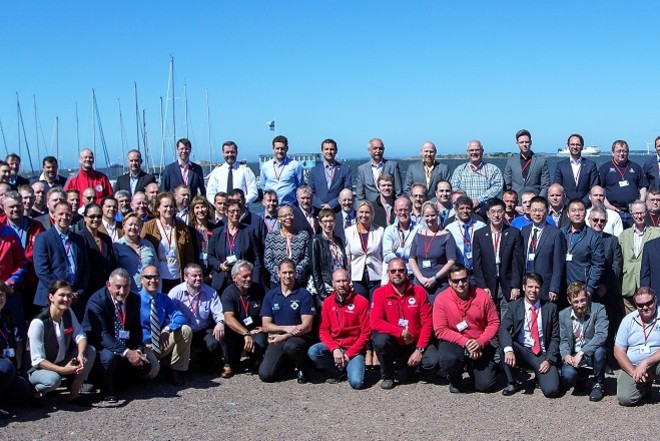
16th June 2017
Mass Rescue conference highlights capability gaps and importance of planning
Client news
More must be done to emphasis the importance of maritime mass rescue operation planning to identify and meet gaps in search and rescue (SAR) response capability. This was part of the message delivered to delegates by Dr Doumbia-Henry at the opening of the 4th International Maritime Mass Rescue Conference in Gothenburg last week.
She noted that learning from experience and exchanging views was essential and that recent experience in the Mediterranean had highlighted the need for mass rescue capability and preparedness. She added that increasing vessel traffic in arctic waters highlighted the need to consider current inadequate SAR resources for such a challenging environment, while the need for all levels of SAR capability in the developing world continues to outpace resources.
The conference run by the International Maritime Rescue Federation is the most important event of its kind, attracting SAR practitioners with 140 delegates from 25 countries attending.
The International MRO Conference which has been hosted by the Swedish Sea Rescue Society (SSRS), started with a practical exercise which took place around the small islets off Långedrag and involved more than 100 people and 20 rescue boats. The delegates took lead roles in the rescue boat crews and at the landing sites while more than 70 volunteers from local SAR services took part, acting as casualties and boat crew.
Bruce Reid, CEO IMRF commented:
“The Sunday exercise provided helped demonstrate the challenges of MRO with delegates experiencing first-hand the challenge of finding 70 people scattered across islands, in low visibility. The shoreside response, coordination again proved one of the biggest problems, how to manage large groups of distressed and injured people quickly and efficiently proved almost too hard in the exercise”
“The sea-based simulation exercise provided by SSRS, explored everything from places of safety, to communications priorities, systems and structure, to support at the scene and managing multiple aircraft, maritime and shoreside coordination, to accounting for people in mass rescue scenarios.”
Monday and Tuesday of the conference were dedicated to lessons learned, using real case studies to allow delegates and specialist panelists to discuss and debate key areas of MRO’s focusing on Rescue, Coordination, Communication and Planning.
The case studies were presented by people involved in the actual events which provided the delegates with first hand accounts. Key areas raised in discussions relating to the case studies will be added to the IMRF MRO online resource library, imrfmro.org.
Increased visibility of the rescuers is an evolving challenge, with social media postings and cell phones mentioned in all case studies. In one of the studies, the survivors first questions to the rescuers was where could they get power for their phones. In another case study, the phones of some of the civilian support services were voluntarily impounded to help manage the information flow. These factors emphasize the need to have plans that continue to evolve to accommodate these new challenges.
Key note speaker Fredrik Forsman of SSRS brought the ‘human element’ to the discussions as he provided delegates with his first-hand experience of MRO in the Aegean Sea off Greece rescuing 100’s of people in the water but having to accept that not all those in distress could be saved. The presentation reminded all in the room that rescues are made by people helping people.
In closing IMRF MRO Project manager David Jardine-Smith said;
“Mass rescue operations, as defined by the International Maritime Organization, are beyond normal search and rescue (SAR) capability. They are therefore of vital interest to anyone responsible for SAR planning and response.
“They are rare, at least in the developed world, but extremely challenging, which is why it’s so important to plan and train; to identify any issues and build relationships with the right people before a response is needed, because – as we say – it’s not if, but when… and the better prepared the responders are, the more lives they will save.”
Bruce Reid, added:
“The feedback from the delegates has been very positive and we are extremely grateful to all of our partners who have come together to make an exercise on this scale a possibility”.
The International Maritime Rescue Federation is a charity and the only organization to represent and unite search and rescue providers around the world, sharing best practice and knowledge and representing this important sector at the UN’s International Maritime Organization.
ENDS
Notes for Editors
IMRF
The International Maritime Rescue Federation (IMRF) brings the world's maritime search and rescue organisations together in one global and growing family. IMRF's member organisations share their lifesaving ideas, technologies and experiences and freely cooperate with one another to achieve their common humanitarian aim: "Preventing loss of life in the world's waters".
The International Maritime Rescue Federation was founded (as the International Lifeboat Federation) in 1924. In 1985 it was granted non-governmental consultative status with the International Maritime Organization (IMO) in recognition of the good work being undertaken and the growing need for an organisation to act as a global focal point for maritime search and rescue. In 2003 it was registered as an independent charity and in 2007 the organisation was renamed the International Maritime Rescue Federation (IMRF), reflecting the broader scope of modern maritime search and rescue activity.
www.international-maritime-rescue.org